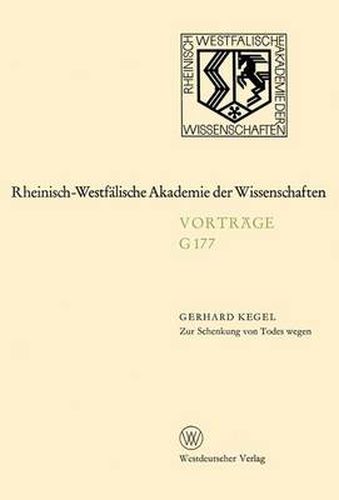Readings Newsletter
Become a Readings Member to make your shopping experience even easier.
Sign in or sign up for free!
You’re not far away from qualifying for FREE standard shipping within Australia
You’ve qualified for FREE standard shipping within Australia
The cart is loading…






This title is printed to order. This book may have been self-published. If so, we cannot guarantee the quality of the content. In the main most books will have gone through the editing process however some may not. We therefore suggest that you be aware of this before ordering this book. If in doubt check either the author or publisher’s details as we are unable to accept any returns unless they are faulty. Please contact us if you have any questions.
A common type of litigation involves claims by executors and adminis- trators or, in civil law countries, heirs and residuary legatees against donees who have received gifts mortis causa from a deceased. The transfer of property by way of gift follows different rules from those applied to testamentary dispositions. In particular, a will must be in writing, whereas a gift may be oral if followed by actual delivery. Since most gifts are made orally or, at least, do not satisfy the formal require- ments of a testamentary disposition and, moreover, gifts mortis causa are often made shortly before the death of the donor, the crucial question in many proceedings turns on whether there has been an actual delivery. The author discusses this problem under German law, illustrating it by reference to English and American authorities. In order to see the problem in its proper perspective, the author examines the fundamental distinctions between testamentary dispositions and dis- positions inter vivos. He concludes that there are four essential character- istics of a valid will. Thus, a testamentary disposition is limited to- (I) time after death; (II) the appointment of a successor to property; (III) such property of the deceased as is vested in him at death; (IV) person(s) surviving the deceased. In contradistinction, all other purported transfers of property are dis- positions inter vivos.
$9.00 standard shipping within Australia
FREE standard shipping within Australia for orders over $100.00
Express & International shipping calculated at checkout
This title is printed to order. This book may have been self-published. If so, we cannot guarantee the quality of the content. In the main most books will have gone through the editing process however some may not. We therefore suggest that you be aware of this before ordering this book. If in doubt check either the author or publisher’s details as we are unable to accept any returns unless they are faulty. Please contact us if you have any questions.
A common type of litigation involves claims by executors and adminis- trators or, in civil law countries, heirs and residuary legatees against donees who have received gifts mortis causa from a deceased. The transfer of property by way of gift follows different rules from those applied to testamentary dispositions. In particular, a will must be in writing, whereas a gift may be oral if followed by actual delivery. Since most gifts are made orally or, at least, do not satisfy the formal require- ments of a testamentary disposition and, moreover, gifts mortis causa are often made shortly before the death of the donor, the crucial question in many proceedings turns on whether there has been an actual delivery. The author discusses this problem under German law, illustrating it by reference to English and American authorities. In order to see the problem in its proper perspective, the author examines the fundamental distinctions between testamentary dispositions and dis- positions inter vivos. He concludes that there are four essential character- istics of a valid will. Thus, a testamentary disposition is limited to- (I) time after death; (II) the appointment of a successor to property; (III) such property of the deceased as is vested in him at death; (IV) person(s) surviving the deceased. In contradistinction, all other purported transfers of property are dis- positions inter vivos.